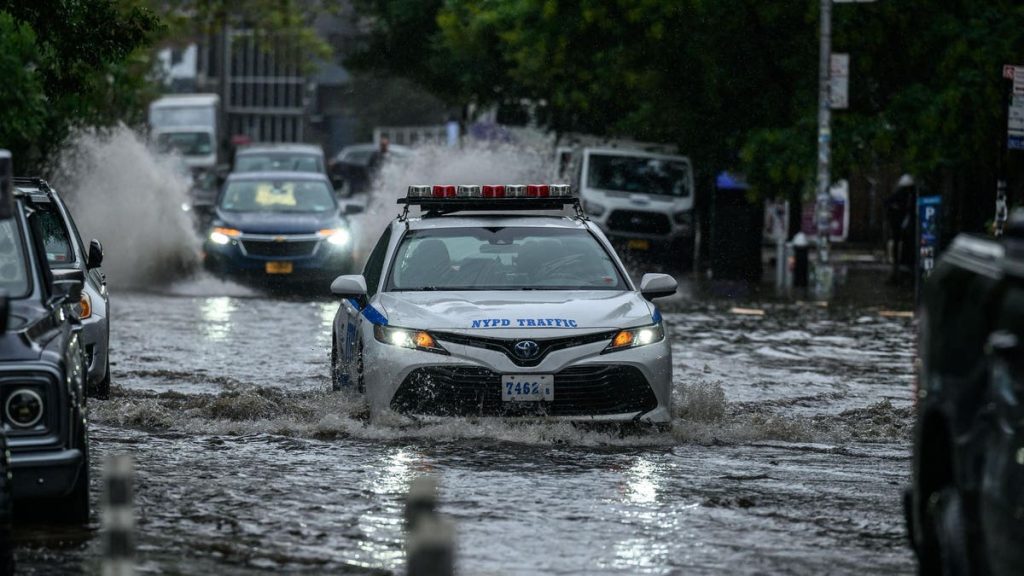Topline
New York City and the tri-state area is experiencing heavy rainfall, leading to flooding that has impacted city services, but research shows climate change might be to blame due to an increase in precipitation.
Key Facts
Due to “extreme rainfall,” New York Gov. Kathy Hochul declared a state of emergency Friday morning, urging over 8.5 million people to stay safe and avoid traveling on flooded roads.
Southeast New York, northeast New Jersey and parts of Connecticut are at risk of being soaked with excessive rainfall on Friday and Saturday, totaling as much as one to two inches per hour.
New York City issued a travel advisory and a request from the Metropolitan Transit Authority on Friday asking residents to “stay home” if travel isn’t necessary as services may be “severely disrupted.”
Flooding as a result of the heavy rain has caused road closures, rescue attempts, flooded basements and interrupted subway services as parts of New York experienced a month’s worth of rain in just three hours on Friday morning.
If New York City gets more than 7.13 inches of rain over the 24-hour period on Friday, it will beat Hurricane Ida’s September 2021 record rainfall, NBC News reports.
This type of flooding is expected to become more common, as the Intergovernmental Panel on Climate Change said in a special report that climate change “has detectably influenced” several of the events that cause flooding, like rainfall and snowmelt.
Big Number
90%. That’s the percentage of all U.S. natural disasters that happen because of flooding, according to the Department of Homeland Security. Floods account for more economic damage, property damage and loss of life than any other natural disaster.
Key Background
More flooding is happening in the Northeast, Midwest and Mississippi Valley due to heavier rainfall, according to a paper published in Climate Science Special Report. The paper also found coastal flooding has more than doubled over the last few decades. Climate change is potentially increasing the frequency and intensity of extreme flood events, but decreasing the number of moderate floods, researchers found in a 2021 Nature study. Climate change can affect the intensity and frequency of precipitation because warmer oceans mean more water being evaporated into the air. Once this evaporated water moves over land or merges with a storm system, it can create more intense precipitation, like heavy rainfall or snow. In the U.S., annual precipitation has increased at a rate of 0.2 inches since 1901, with extreme precipitation events increasing at a larger rate, the Center for Climate and Energy Solutions reports. The organization cites flooding as the most immediate impact of increased precipitation, with urban areas like New York City most at risk due to “nonpermeable pavement” forcing water to quickly run into sewage systems.
Tangent
There are three main types of floods that affect the U.S. each year: flash floods, river floods and storm surges. Flash floods, like the one affecting New York and surrounding states, are caused by extreme rainfall over a short period of time, and typically lead to water levels rising quickly within a matter of minutes. Though called a river flood, these types of floods can affect any type of body of water, like lakes and streams, the U.S. Geographical Survey reports. They can typically be predicted in advance, allowing time for potential evacuation plans. Storm surges occur along the coast and are caused by either tsunamis or intense wind storms that happen at the same time as high tide.
Flash Floods In New York City Prompt State Of Emergency—See Photos (Forbes)
New York City could see historic flooding as up to 6 inches of rain pelts the Northeast (NBC News)
Read the full article here









